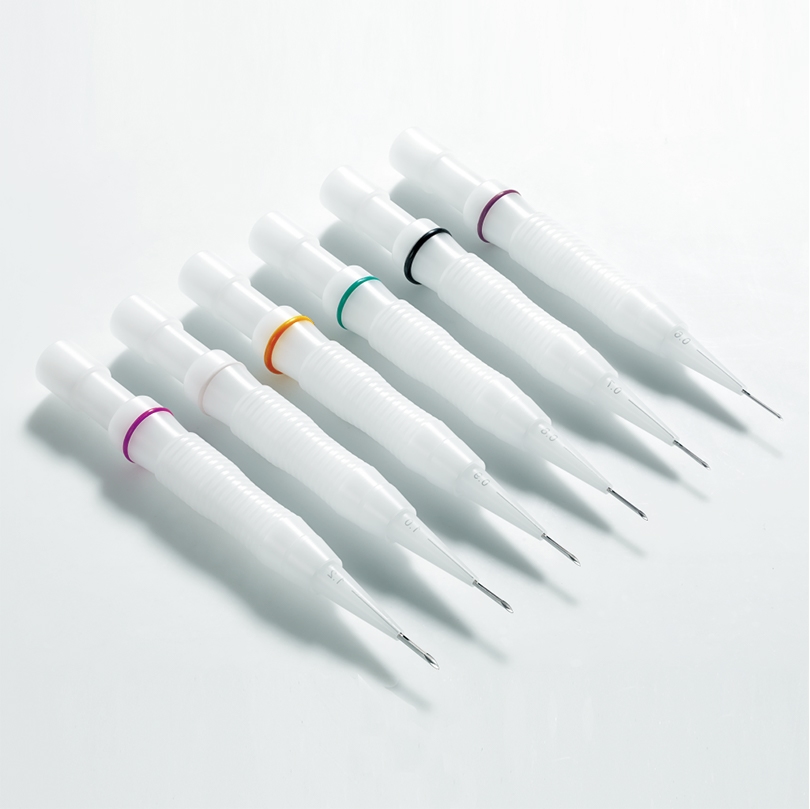Beard transplant in just 2 days in Cancun, first results visible in 2 weeks. Accommodation and transport included.

Consultation
During the beard transplant consultation, the doctor assesses the hair density and determines the required number of grafts for transplantation. The focus is on donor areas, including the back of the head, temples, and under the chin, where hair tends to be dense and resistant to shedding. The doctor explains the procedure steps in detail, discusses potential results, and answers all questions.
Send Your Photos for Graft Estimate

For us to create a personalized treatment plan for your beard transplant, we need a photos from you. Based on the example photo shown, please ensure your images are:
These photos will help our specialist accurately evaluate your case and determine the best approach for optimal results.
Beard Transplant Process
1. Consultation and Planning:
During this stage, the doctor examines the patient’s scalp, discusses their expectations and goals, and determines the treatment plan. The patient is informed about all aspects of the upcoming procedure.
2. Preparation for the Procedure:
This includes trimming the hair in the donor area (usually at the back of the head) to simplify access to the follicles.
3. Marking the Head:
The doctor carefully marks the beard area by drawing lines to outline the desired shape and coverage. This marking process ensures precise placement of the grafts, helping to achieve a natural look and symmetry according to the patient’s facial structure and preferences.
4. Local Anesthesia:
This is done to ensure the procedure is pain-free and comfortable for the patient. The anesthesia is applied to the area where the grafts will be placed to numb the implant site.




5. Graft Extraction
The doctor carefully extracts the hair follicles or grafts from the donor area one by one using the FUE (Follicular Unit Extraction) technique with a micromotor, minimizing trauma to the surrounding tissues.
6. Beard Transplantation:
For beard transplantation, the same method used for hair transplantation on the scalp DHI (Direct Hair Implantation) with the Choi Pen is applied. This tool allows for precise graft implantation without the need for prior incisions, speeding up healing and ensuring a natural-looking result.
7. Bandaging the Donor Area:
After the grafts have been transplanted, the doctor applies a sterile bandage to the donor area to prevent infection and support the healing process.
8. Day 2: Follow-Up Care
The day after the beard transplant, the patient returns to the clinic for a follow-up examination and treatment. The specialist checks the condition of the transplanted grafts, cleans both the transplanted and donor areas, and applies special soothing and moisturizing products. The patient receives further instructions on how to care for the skin to ensure proper healing and reduce the risk of complications.
Beard Transplant Process
1. Consultation and Planning:
During this stage, the doctor examines the patient’s scalp, discusses their expectations and goals, and determines the treatment plan. The patient is informed about all aspects of the upcoming procedure.
2. Preparation for the Procedure:
This includes trimming the hair in the donor area (usually at the back of the head) to simplify access to the follicles.

3. Marking the Head:
The doctor carefully marks the beard area by drawing lines to outline the desired shape and coverage. This marking process ensures precise placement of the grafts, helping to achieve a natural look and symmetry according to the patient’s facial structure and preferences.

4. Local Anesthesia:
This is done to ensure the procedure is pain-free and comfortable for the patient. The anesthesia is applied to the area where the grafts will be placed to numb the implant site.

5. Graft Extraction
The doctor carefully extracts the hair follicles or grafts from the donor area one by one using the FUE (Follicular Unit Extraction) technique with a micromotor, minimizing trauma to the surrounding tissues.

6. Beard Transplantation:
For beard transplantation, the same method used for hair transplantation on the scalp DHI (Direct Hair Implantation) with the Choi Pen is applied. This tool allows for precise graft implantation without the need for prior incisions, speeding up healing and ensuring a natural-looking result.
7. Bandaging the Donor Area:
After the grafts have been transplanted, the doctor applies a sterile bandage to the donor area to prevent infection and support the healing process.
8. Day 2: Follow-Up Care
The day after the beard transplant, the patient returns to the clinic for a follow-up examination and treatment. The specialist checks the condition of the transplanted grafts, cleans both the transplanted and donor areas, and applies special soothing and moisturizing products. The patient receives further instructions on how to care for the skin to ensure proper healing and reduce the risk of complications.
Progress from Day 1 to 365




Post Beard Transplant Care: What to Avoid
The following guidelines have been crafted to help you navigate the recovery phase with ease. Follow these closely to protect your investment and achieve the best possible outcomes.
Do not scratch your transplanted beard hair:
Avoid scratching the transplanted area, as this can lead to infection and slow healing. Picking at scabs may damage the follicles and reduce the effectiveness of the procedure.
If you accidentally scratch the area and notice bleeding, swelling, or inflammation, contact your doctor as soon as possible. In some cases, an antibiotic may be necessary to prevent infection. If the itching becomes unbearable, your doctor can prescribe medication to help relieve it.
Follow all post-op instructions to protect the grafts and ensure optimal results.

Shampoo:
Using gentle cleansing agents, you remove excess oil, dirt, and protective scabs, promoting healthy skin healing and preventing infection. The shampoo should be specifically designed for sensitive skin and safe for transplanted hair follicles.
Regular use of a mild shampoo allows the skin to breathe and stimulates blood circulation in the transplant area. This helps strengthen the follicles and prevents the skin from drying out, which is especially important during the healing process.

Lotion:
A post-transplant beard lotion is essential for moisturizing and soothing the skin during the recovery period. It helps prevent dryness, flaking, and itching, which are common after the procedure. The lotion forms a barrier on the skin, aiding in healing and protecting the transplanted follicles from external irritants. Apply the lotion with gentle movements to avoid damaging the new grafts.

Do not shave your beard:
For at least one month after the transplant. During the first month, the newly transplanted follicles are still settling, and shaving can dislodge them, negatively impacting the results. It can also cause irritation and inflammation, which slows down the healing process. Avoid shaving for at least a month to allow the transplanted hair to fully take root.
If necessary, you can carefully trim your beard with scissors to avoid touching the skin and damaging the follicles.

Sun Exposure and Saunas:
Sun Exposure: Avoid direct sunlight for the first few weeks after a beard transplant. UV rays can cause burns, slow down healing, and lead to skin pigmentation. Use a hat for protection and avoid applying sunscreen directly to the transplanted area until it has fully healed.
Sauna Visits: High heat and humidity can slow recovery and damage the follicles. Avoid saunas, steam rooms, and hot showers for at least one month after the procedure.
Swimming Pools: Chlorine and chemicals in pool water can irritate the transplanted area and increase the risk of infection. Avoid swimming for the first 2–3 weeks or until your doctor gives approval.


Get Your Personalized Graft Count!
Click to take our survey, and find out if you’re a candidate. Our doctor will send you a personalized treatment plan with the exact number of grafts you need.
Our Advantages

Patient Comfort First
We prioritize your comfort above all else

7 years of experience
Clinics in Turkey and Mexico with over 2500+ happy clients

Modern equipment
from South Korea, USA, Germany, Italy

Stable pricing
Our procedure prices have stayed the same for 5 years
Central location
Convenient location, 10 minutes from Cancun center

Ongoing training
Doctors continually upgrade skills through training in Turkey

Experienced doctors
Experienced doctors with 3 to 15 years of practice

Painless treatment
You won’t experience sharp pain during the procedure
A Few Numbers
Explore our professional background of excellence
F.A.Q.
A beard transplant is a procedure where hair is taken from another part of your body (usually from the back of the head, but also from under the chin or, in rare cases, from the body) and transplanted into the beard area. This helps fill in patchy spots or create a full beard if you have trouble growing one naturally. The process uses Choi pen and the direct implantation DHI method, and once transplanted, the hairs grow just like a natural beard.
If you’ve always wanted a thick, well-shaped beard but have areas where hair just won’t grow, a beard transplant can be the solution. It helps create a natural and even look, as well as boost your confidence. Plus, you can shape your beard the way you like—whether it’s a full beard or neatly trimmed edges, like after a barber’s work, with clean lines on the cheeks.
The good news is that the procedure itself is virtually painless. Local anesthesia is used, so you won’t feel anything during the transplant. After the procedure, you may experience some mild soreness or discomfort, but it is usually easily managed with over-the-counter painkillers.
The initial recovery period takes about 5-7 days. During this time, you may notice some redness and swelling, which is completely normal. After two weeks, the transplanted hairs may start to fall out—this is an expected part of the process. Within 3-4 months, you will start seeing new, permanent hair growth, with full results visible after about 6-9 months.
Yes, the new beard will look natural because it’s made from your own hair. The surgeon transplants each hair individually to ensure it follows the natural direction and pattern of beard growth. Once fully grown, you can trim and style it just like a natural beard.
Typically, a beard transplant takes about 4-8 hours, depending on how many grafts are needed. It’s usually done in one session, and the next day you will return for receiving aftercare instructions for the beard.
Most patients can expect visible signs, such as redness and swelling, to subside within 5-7 days. By the end of the first week, most of the noticeable effects will have diminished, allowing your face to look more natural. However, it’s important to follow aftercare instructions closely to ensure proper healing.
Yes, the results are permanent. The transplanted hair will continue to grow just like the rest of your facial hair. Once the hairs have settled, they’ll be there for life, giving you the beard you’ve always wanted.
The cost of a beard transplant can vary depending on the clinic and the number of grafts you need. It’s important to consult with the clinic to get an accurate quote based on your specific needs.
- Av. Huayacan esq. Calle Ciricote Smz. 313 Mza. 257 Local 1-100, 77500 Cancún, Q.R.
- clinic@hairtransplantbyturkish.com